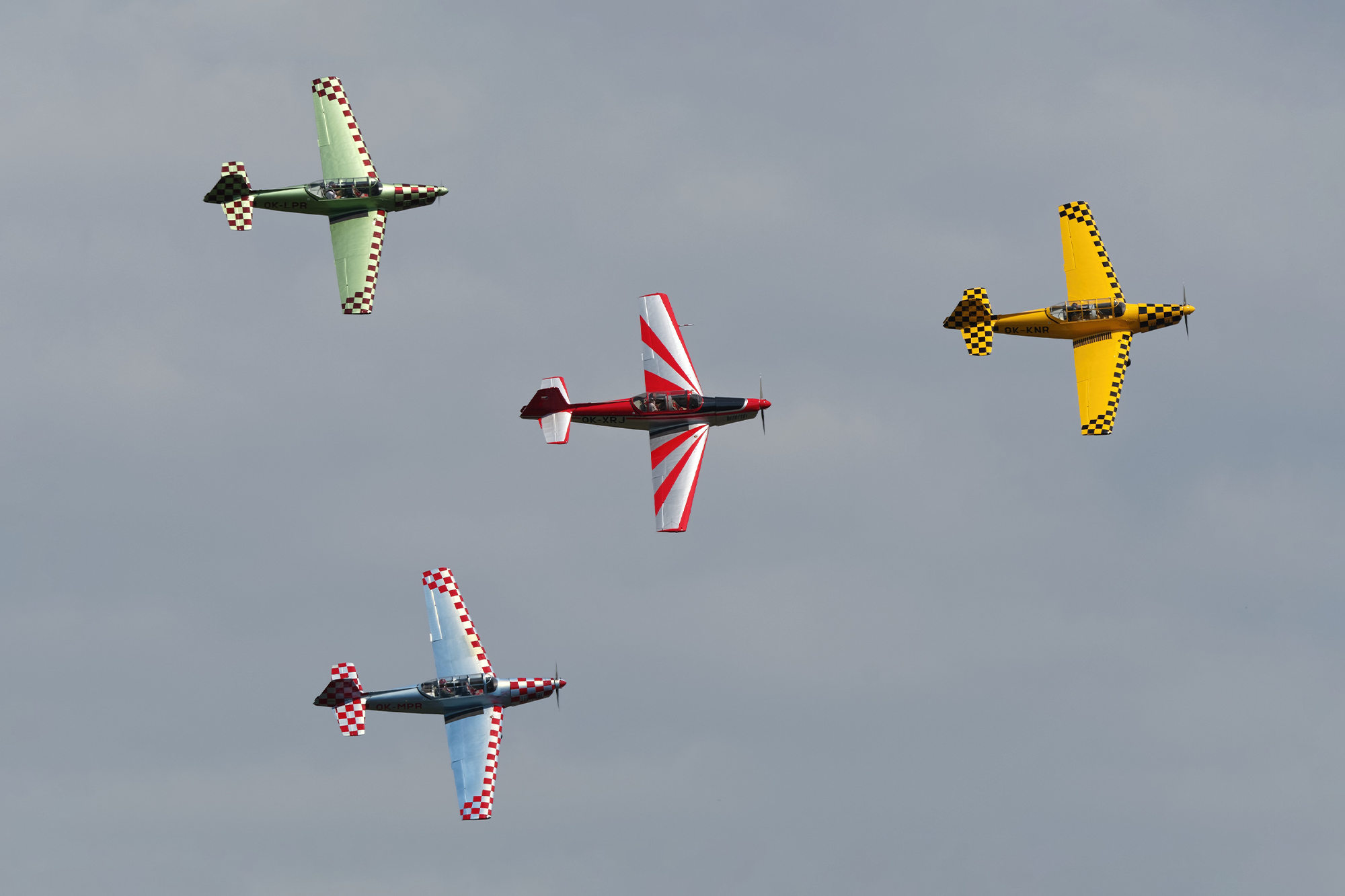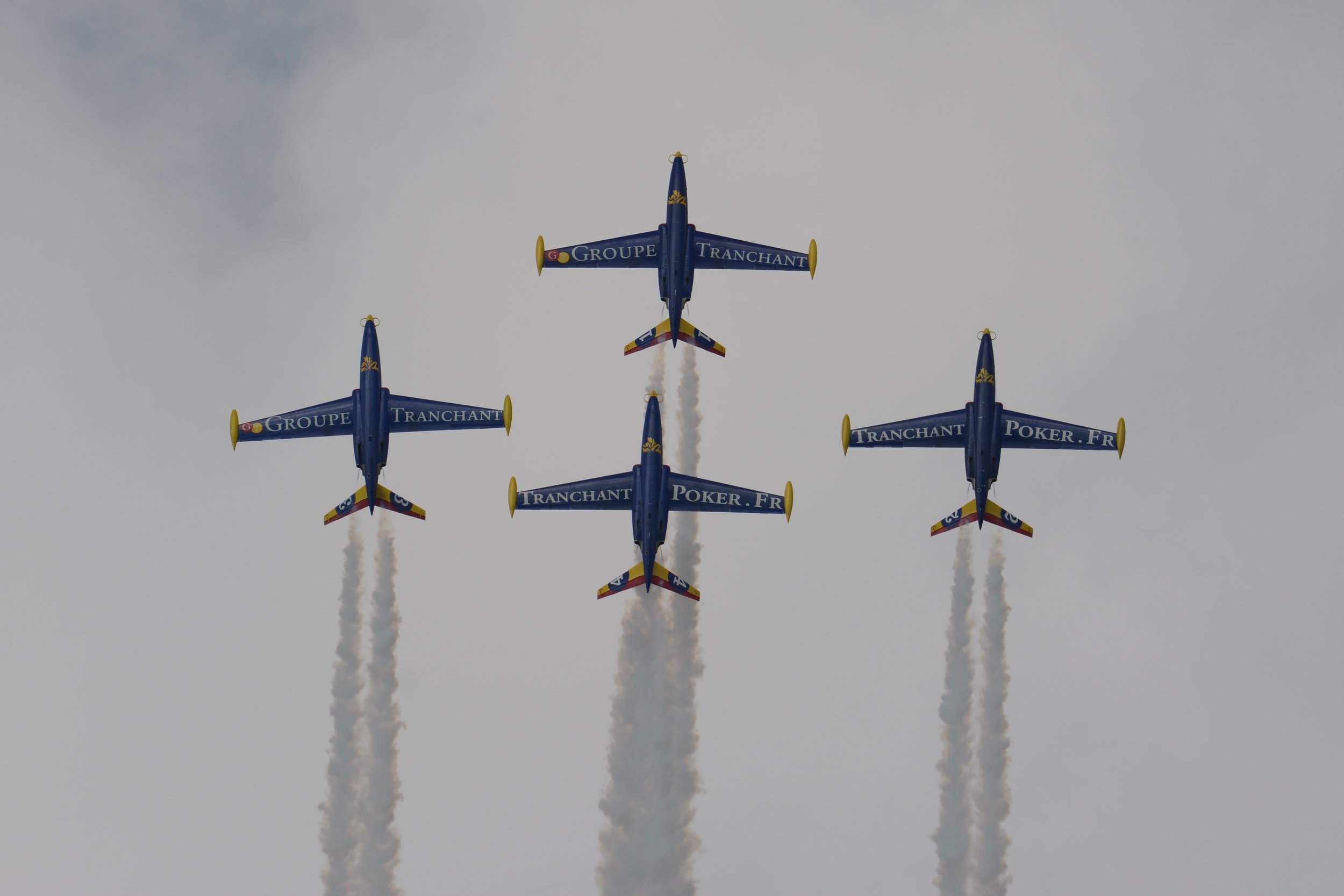Pterodactyl Flight
Country
Czechia
Size
8 Aircraft
Base
Jihlava airport
Pterodactyl Flight is a Czech civilian WWI Air Combat reconstruction team. The original flight group Pterodactyl Flight offers a unique opportunity to see combat demonstrations of replicas of historical machines such as the Sopwith 1½ Strutter, SE-5a or Fokker E-III in realistic air fights. The demonstrations look very realistic and thus the audience may experience the atmosphere of air-to-air combat in full cruelty. Air shows are offered in several variants according to customer’s requirements.
The flight speed of the performing aircraft is 120 km/h. The home airport of the planes is Zirovnice on the border between the Highlands and Southern Bohemia. The display begins with the takeoff of the Sopwith 1½ Strutter and Morane Saulnier planes, then they climb to about 100 metres. After sharp turns, the tandem launches an attack on land targets and a historic replica of the German Hanomag vehicle pulling a cannon to the front.
After two or three low level passes this vehicle is disabled and it may explode (pyro effect) or is only ablaze. After the targets have been destroyed, the Fokker E-III takes off and attacks the Sopwith 1½ Strutter and then they demonstrate an air-to-air engagement lasting for about five minutes, including flights against each other and classical fight in turnings accompanied by gunfire from the aircraft weapons. At the end of the duel, the Fokker E-III is shot down, which again can be completed with an explosion and fire of the destroyed aircraft behind a suitable obstacle or terrain wave.
The entire demonstration is concluded by the triumphant flight of the Sopwith 1½ Strutter, the rear gunner stands and salutes the audience, or the Fokker E-III and the Morane Saulnier join the winning plane, fly in a group and land together. After landing, the machines taxi at the safety fencing for the audience. The length of the performance is 20 minutes maximum so as to preserve the dynamics of the show. The demonstration takes place at a distance of 50 m to 300 m horizontally and from 2 m to 100 m vertically from the spectators.
| Back to Top |
Fokker Dr.1 (Replica)
The Fokker Dr.I (Dreidecker, "triplane" in German), often known simply as the Fokker Triplane, was a World War I fighter aircraft built by Fokker-Flugzeugwerke. The Dr.I saw widespread service in the spring of 1918. It became famous as the aircraft in which Manfred von Richthofen gained his last 19 victories, and in which he was killed on 21 April 1918.
In February 1917, the Sopwith Triplane began to appear over the Western Front. Despite its single Vickers machine gun armament, the Sopwith swiftly proved itself superior to the more heavily armed Albatros fighters then in use by the Luftstreitkräfte. In April 1917, Anthony Fokker viewed a captured Sopwith Triplane while visiting Jasta 11. Upon his return to the Schwerin factory, Fokker instructed Reinhold Platz to build a triplane but gave him no further information about the Sopwith design. Platz responded with the V.4, a small, rotary-powered triplane with a steel tube fuselage and thick cantilever wings, first developed during Fokker's government-mandated collaboration with Hugo Junkers. Initial tests revealed that the V.4 had unacceptably high control forces resulting from the use of unbalanced ailerons and elevators.
Instead of submitting the V.4 for a type test, Fokker produced a revised prototype designated V.5. The most notable changes were the introduction of horn-balanced ailerons and elevators, as well as longer-span wings. The V.5 also featured interplane struts, which were not necessary from a structural standpoint, but which minimized wing flexing. On 14 July 1917, Idflieg issued an order for 20 pre-production aircraft. The V.5 prototype, serial 101/17, was tested to destruction at Adlershof on 11 August 1917.
| Back to Top |
Fokker E.III (Replica)
The Fokker E.III was the main variant of the Eindecker (literally meaning "one deck") fighter aircraft of World War I. It entered service on the Western Front in December 1915 and was also supplied to Austria-Hungary and Turkey.
The E.III was basically an E.II fitted with larger, newly designed wings that had a slightly narrower chord of 1.80 meter (70-7/8 in), compared to 1.88 meter (74 in) on the earlier Eindeckers, going back to Fokker's original M.5 monoplane aircraft. The E.III retained the same 75 kW (100 hp) Oberursel U.I engine, and therefore also used the larger diameter "horseshoe" pattern cowling that also mandated the inclusion of the E.II's soffit-like extensions to the sides of the upper nose sheet metalwork, but had a larger 81 l (21.5 gal) drum-shaped main fuel tank just behind the cockpit, which increased the Eindecker's endurance to about 2½ hours; an hour more than the E.II. Most E.IIIs were armed with a single 7.92 mm (.312 in) Spandau LMG 08 machine gun with 500 rounds of ammunition; however, after the failure of the twin-gun Fokker E.IV as a viable successor, some E.IIIs were fitted with twin guns.
| Back to Top |
Fokker D.VII (Replica)
The Fokker D.VII was a German World War I fighter aircraft designed by Reinhold Platz of the Fokker-Flugzeugwerke. Germany produced around 3,300 D.VII aircraft in the second half of 1918. In service with the Luftstreitkräfte, the D.VII quickly proved itself to be a formidable aircraft. The Armistice ending the war specifically required, as the fourth clause of the "Clauses Relating to the Western Front", that Germany was required to surrender all D.VIIs to the Allies. Surviving aircraft saw much service with many countries in the years after World War I.
Fokker's chief designer, Reinhold Platz, had been working on a series of experimental V-series aircraft, starting in 1916. The aircraft were notable for the use of cantilever wings. Hugo Junkers and his aviation firm had originated the idea in 1915 with the first practical all-metal aircraft, the Junkers J 1 monoplane, nicknamed Blechesel (Sheet Metal Donkey or Tin Donkey). The wings were thick, with a rounded leading edge. The shape of the wings' airfoil gave greater lift, with its relatively "blunt" leading edge (as seen in cross-section) giving it more docile stalling behavior than the thin wings commonly in use.
Late in 1917, Fokker built the experimental V 11 biplane, fitted with the standard Mercedes D.IIIa engine. In January 1918, Idflieg held a fighter competition at Adlershof. For the first time, front line pilots participated in the evaluation and selection of new fighters. Fokker submitted the V 11 along with several other prototypes. Manfred von Richthofen flew the V 11 and found it tricky, unpleasant and directionally unstable in a dive. Platz lengthened the rear fuselage by one structural bay and added a triangular fin in front of the rudder. Richthofen tested the modified V 11 and praised it as the best aircraft of the competition. It offered excellent performance from the outdated Mercedes engine, yet was safe and easy to fly. Richthofen's recommendation virtually decided the competition but he was not alone in recommending it. Fokker immediately received a provisional order for 400 production aircraft, which were named D.VII by Idflieg.
Fokker's factory was not up to the task of meeting all D.VII production orders and Idflieg directed Albatros and AEG to build the D.VII under license, though AEG did not ultimately produce any aircraft. Because the Fokker factory did not use detailed plans as part of its production process, Fokker simply sent a D.VII airframe for Albatros to copy. Albatros paid Fokker a five percent royalty for every D.VII it built under license. Albatros Flugzeugwerke and its subsidiary, Ostdeutsche Albatros Werke (OAW), built the D.VII at factories in Johannisthal [Fokker D.VII (Alb)] and Schneidemühl [Fokker D.VII (OAW)] respectively. Aircraft markings included the type designation and factory suffix, immediately before the individual serial number.
Some parts were not interchangeable between aircraft produced at different factories, even between Albatros and OAW. Each manufacturer tended to differ in both nose paint styles and the patterning and layout of their engine compartment cooling louvers on the sides of the nose. OAW produced examples were delivered with distinctive mauve and green splotches on the cowling. All D.VIIs were produced with either the five-color Fünffarbiger or less often, the four-color Vierfarbiger lozenge camouflage covering, except for early Fokker-produced D.VIIs, which had a streaked green fuselage. Factory camouflage finishes were often overpainted with colorful paint schemes or insignia for the Jasta or for a pilot.
In September 1918, eight D.VIIs were delivered to Bulgaria. Late in 1918, the Austro-Hungarian company Magyar Általános Gépgyár (MÁG, Hungarian General Machine Company) commenced licensed production of the D.VII with Austro-Daimler engines. Production continued after the end of the war, with as many as 50 aircraft completed.
The earliest production D.VIIs were equipped with 170–180 hp Mercedes D.IIIa.[5] Production quickly switched to the intended standard engine, the higher-compression 134 kW (180–200 hp) Mercedes D.IIIaü. Some early production D.VIIs delivered with the Mercedes D.IIIa were later re-engined with the D.IIIaü.
By mid-1918, some D.VIIs received the "overcompressed" 138 kW (185 hp) BMW IIIa, the first product of the BMW firm. The BMW IIIa followed the SOHC, straight-six configuration of the Mercedes D.III but incorporated several improvements. Increased displacement, higher compression and an altitude-adjusting carburettor produced a marked increase in speed and climb rate at high altitude. Because the BMW IIIa was overcompressed, using full throttle at altitudes below 2,000 m (6,600 ft) risked premature detonation in the cylinders and damage to the engine. At low altitudes, full throttle could produce up to 179 kW (240 hp) for a short time. Fokker-built aircraft with the new BMW engine were called D.VII(F), the suffix "F" standing for Max Friz, the engine designer.
BMW-engined aircraft entered service with Jasta 11 in late June 1918. Pilots clamored for the D.VII(F), of which about 750 were built. Production of the BMW IIIa was limited and the D.VII continued to be produced with the 134 kW (180 hp) Mercedes D.IIIaü until the end of the war.
D.VIIs flew with different propeller designs from different manufacturers. Despite the variations there is no indication these propellers gave disparate performance. Axial, Wolff, Wotan, and Heine propellers have been noted.
| Back to Top |
Morane-Saulnier MS.185 Avionnette (Replica)
The Morane-Saulnier MS.180 is a single-engine, single parasol wing aerobatic trainer designed in France in 1929. About seventeen were produced and used in French flying clubs, some surviving World War II and one remaining in use at a club until the 1970s. Before World War II, some were used by Spanish Republican forces to train pilots in the Spanish Civil War. Two MS.181s are still flying.
Morane-Saulnier were well known for their series of parasol wing fighter aircraft. The MS.180 was in that tradition but was designed as an aerobatics trainer, a single-seat near contemporary of the two-seat but otherwise similar Morane-Saulnier MS.230, somewhat smaller and much lower powered. The aircraft is built from a mixture of wood and metal and, apart from the forward fuselage, is fabric covered. Its swept-wing has metal spars and ailerons but wooden ribs. It is carried over the fuselage on inverted V-form metal cabane struts and braced to the lower fuselage with parallel pairs of metal lift struts. The forward fuselage is metal framed and clad but structurally wooden aft. The cockpit is below the wing trailing edge, with a large cut-out for visibility. The tail unit is metal-framed, with the tailplane on top of the fuselage, The fin has a rounded leading edge and the rudder extends to the bottom of the fuselage, moving between separate elevators. The MS.180 has a fixed, conventional undercarriage with single mainwheels mounted on V-form struts hinged to the lower fuselage. The shock absorber legs are near vertical and attached to the forward lift struts; these latter are further braced to the upper fuselage at the leg attachment points. A tail skid completes the landing gear.
The MS.180 first flew in 1929, powered by a 40 hp (30 kW) Salmson 9Ad 9-cylinder radial engine of 3.65 L (227 cu in) capacity. Later aircraft, designated MS.181, were powered by the larger capacity (5.1 L, 315 cu in) 60 hp (40 kW) Salmson 5Ac 5-cylinder radial. Reconstructions of the French civil aircraft register suggest that only one MS.180 was built and that later converted to the more powerful engine.
| Back to Top |
Sopwith 1½ Strutter (Replica)
The Sopwith 1+1⁄2 Strutter was a British single- or two-seat multi-role biplane aircraft of the First World War. It was the first British two-seat tractor fighter and the first British aircraft to enter service with a synchronised machine gun. It was given the name 1+1⁄2 Strutter because of the long and short cabane struts that supported the top wing. The type was operated by both British air services and was in widespread but lackluster service with the French Aéronautique Militaire.
In December 1914, the Sopwith Aviation Company designed a small, two-seat biplane powered by an 80 hp (60 kW) Gnome rotary engine, which became known as the "Sigrist Bus" after Fred Sigrist, the Sopwith works manager. The Sigrist Bus first flew on 5 June 1915 and although it set a new British altitude record on the day of its first flight, only one was built, serving as a company runabout.
The Sigrist Bus formed the basis for a new, larger, fighter aircraft, the Sopwith LCT (Land Clerget Tractor), designed by Herbert Smith and powered by a 110 hp (82 kW) Clerget engine. Like the Sigrist Bus, each of the upper wings (there was no true centre section) was connected to the fuselage by a pair of short (half) struts and a pair of longer struts, forming a "W" when viewed from the front; this giving rise to the aircraft's popular nickname of the 1+1⁄2 Strutter. The first prototype was ready in mid-December 1915, undergoing official testing in January 1916.
The 1+1⁄2 Strutter was of conventional wire-braced, wood and fabric construction. The pilot and gunner sat in widely separated tandem cockpits, with the pilot in front, giving the gunner a good field of fire for his Lewis gun. The aircraft had a variable-incidence tailplane that could be adjusted by the pilot in flight and airbrakes under the lower wings to reduce landing distance.
The Vickers-Challenger synchronisation gear was put into production for the Royal Flying Corps (RFC) in December 1915 and in a few weeks, a similar order for the Scarff-Dibovski gear was placed for the RNAS. Early production 1+1⁄2 Strutters were fitted with one or the other of these gears for the fixed .303-in Vickers machine gun; due to a shortage of the new gears some early aircraft were built with only the observer's gun. Later aircraft were either fitted with the Ross or the Sopwith-Kauper gears. No early mechanical synchronisation gear was reliable and it was not uncommon for propellers to be damaged or shot away.
The Scarff ring mounting was also new and production was at first slower than that of the aircraft requiring them. Various makeshift Lewis mountings as well as the older Nieuport ring mounting, were fitted to some early 1+1⁄2 Strutters as a stopgap. The two seaters could carry four 25 lb (11 kg) bombs underwing, which could be replaced by two 65 lb (29 kg) bombs for anti-submarine patrols. From the beginning, a light bomber version was planned, with the observer's cockpit eliminated to allow more fuel and bombs to be carried in the manner of the Martinsyde Elephant and the B.E.12, with an internal bomb bay capable of carrying four 65 lb (29 kg) bombs.
| Back to Top |
Royal Aircraft Factory S.E.5a (Replica)
The Royal Aircraft Factory S.E.5 was a British biplane fighter aircraft of the First World War. It was developed at the Royal Aircraft Factory by a team consisting of Henry Folland, John Kenworthy and Major Frank Goodden. It was one of the fastest aircraft of the war while being both stable and relatively manoeuvrable. According to aviation author Robert Jackson, the S.E.5 was: "the nimble fighter that has since been described as the 'Spitfire of World War One".
In most respects, the S.E.5 had superior performance to the rival Sopwith Camel, although it was less immediately responsive to the controls. Problems with its Hispano-Suiza engine, particularly the geared-output H-S 8B-powered early versions, meant that there was a chronic shortage of the type until well into 1918. Thus, while the first examples had reached the Western Front before the Camel, there were fewer squadrons equipped with the S.E.5 than with the Sopwith fighter.
Together with the Camel, the S.E.5 was instrumental in regaining allied air superiority in mid-1917 and maintaining it for the rest of the war, ensuring there was no repetition of "Bloody April" 1917 when losses in the Royal Flying Corps were much heavier than in the Luftstreitkräfte. The S.E.5s remained in RAF service for some time following the Armistice that ended the conflict; some were transferred to various overseas military operators, while a number were also adopted by civilian operators.
The Royal Aircraft Factory S.E.5 was a conventional tractor biplane fighter aircraft. The fuselage was a wire-braced box girder structure while the wings were furnished with wooden spars and internal ribs. The fuselage was narrower than many contemporary aircraft, which provided the pilot with good all-round visibility. The aircraft had considerable structural strength, which was credited with improving the type's crashworthiness and survivability. It could also withstand high-g manoeuvres and was relatively resistant to battle damage.
Unlike many of its peers, which were highly agile but unforgiving, the S.E.5 was comparatively stable and easy to fly; its stability enabling pilots to more readily fire upon enemies from further away with a greater degree of accuracy. It had a noticeably lower accident rate than comparable aircraft. The exception to its general stability was an excessive amount of adverse yaw. The yaw could be compensated for by balanced application of the aileron and rudder, whilst adjustment of the elevator trim made it possible to fly in a 'hands-off manner.
The S.E.5 was powered by various engines, initially adopting a Hispano-Suiza 8 V8 engine. The Hispano-Suiza engine was advanced for the era, incorporating such features as an aluminium cylinder block with steel liners, dual ignition and forced lubrication that aided cooling; especially compared with contemporary rotary engines, it had the advantage of being easy to operate by most pilots. An expansion tank for the cooling system was integrated into the leading edge of the upper wing's centre section. One of its greatest advantages over the Sopwith Camel was its superior performance at altitude, making it a much better match for the Fokker D.VII when that fighter arrived at the front.
The S.E.5 was armed with a single synchronised .303-inch Vickers machine gun in contrast to the Camel's two, but it also had a wing-mounted Lewis gun fitted on a Foster mounting, which enabled the pilot to fire at an enemy aircraft from below. This armament configuration was much appreciated by the pilots of the first S.E.5 squadrons as the new hydraulic-link "C.C." synchronising gear for the Vickers machine gun was unreliable at first. The Vickers gun was mounted on the forward left dorsal surface of the fuselage with the breech inside the cockpit, at a slight upwards angle. Typically, spare magazines for the Lewis gun would have been placed within most of the free space in the cockpit including the forward areas, such as the instrumentation panel.
The standard instrument panel included a compass, altimeter, tachometer, oil pressure indicator, airspeed gauge, a radiator temperature dial, fuel-air pressure indicator, fuel selector, and air exchange; these were somewhat difficult to view due to their low-set position in the cockpit. According to "Dodge" Bailey, Chief Test Pilot of the Shuttleworth Collection, the S.E.5's cockpit was "the best of the bunch from the era". It was set amidships, making it difficult to see over the long front fuselage, but otherwise, visibility was good.
Individual in-service S.E.5s would often receive customisations and user-specified tweaks at the request of their pilots. Popular changes included reducing the dihedral of the wings in order to increase its manoeuvrability and the removal of the head fairing to increase the pilot's visibility to the rear. James McCudden, an ace pilot and former RFC mechanic, was famous for his prolific fine-tuning of his aircraft in order to produce improved performance from it; McCudden was able to increase the top speed by 9 mph and to raise the service ceiling from the standard 17,000 ft to 20,000 ft. His adaptions included replacing the standard pistons with high compression versions, shortening the exhaust (saving weight and improving exhaust scavenging), and changes to the mixture, ignition and other engine settings as well as fitting a salvaged German propeller spinner (which he himself credited as gaining 3 mph alone).
Aviation authors Donald Nijboer and Dan Patterson describe the S.E.5 as "arguably the best British-built fighter of World War I"
| Back to Top |
Sopwith Camel (Replica)
The Sopwith Camel was a British First World War single-seat biplane fighter aircraft that was introduced on the Western Front in 1917. It was developed by the Sopwith Aviation Company as a successor to the Sopwith Pup and became one of the best-known fighter aircraft of the Great War.
The Camel was powered by a single rotary engine and was armed with twin synchronized Vickers machine guns. Though difficult to handle, it was highly manoeuvrable in the hands of an experienced pilot, a vital attribute in the relatively low-speed, low-altitude dogfights of the era. In total, Camel pilots have been credited with downing 1,294 enemy aircraft, more than any other Allied fighter of the conflict. Towards the end of the First World War, the type also saw use as a ground-attack aircraft, partly because the capabilities of fighter aircraft on both sides had advanced rapidly and left the Camel somewhat outclassed.
The main variant of the Camel was designated as the F.1. Other variants included the 2F.1 Ship's Camel, which operated from aircraft carriers; the Comic night fighter variant; and the T.F.1, a "trench fighter" armoured for attacks on heavily-defended ground targets. A two-seat variant served as a trainer. The last Camels were withdrawn from RAF service in January 1920.
The Camel had a mostly conventional design for its era, featuring a wooden box-like fuselage structure, an aluminium engine cowling, plywood panels around the cockpit, and a fabric-covered fuselage, wings and tail. While possessing some clear similarities with the Pup, it was furnished with a noticeably bulkier fuselage. For the first time on an operational British-designed fighter, two 0.303 in (7.7 mm) Vickers machine guns were mounted directly in front of the cockpit, synchronised to fire forwards through the propeller disc initially this consisted of the fitment of the Sopwith firm's own synchronizer design, but after the mechanical-linkage Sopwith-Kauper units began to wear out, the more accurate and easier-to-maintain, hydraulic-link Constantinesco-Colley system replaced it from November 1917 onward. In addition to the machine guns, a total of four Cooper bombs could be carried for ground attack purposes.
The bottom wing was rigged with 5° dihedral while the top wing lacked any dihedral; this meant that the gap between the wings was less at the tips than at the roots; this change had been made at the suggestion of Fred Sigrist, the Sopwith works manager, as a measure to simplify the aircraft's construction. The upper wing featured a central cutout section for the purpose of providing improved upwards visibility for the pilot.
Production Camels were powered by various rotary engines, most commonly either the Clerget 9B or the Bentley BR1. In order to evade a potential manufacturing bottleneck being imposed upon the overall aircraft in the event of an engine shortage, several other engines were adopted to power the type as well.
Unlike the preceding Pup and Triplane, the Camel was considered to be difficult to fly. The type owed both its extreme manoeuvrability and its difficult handling to the close placement of the engine, pilot, guns and fuel tank (some 90% of the aircraft's weight) within the front seven feet of the aircraft, and to the strong gyroscopic effect of the rotating mass of the cylinders common to rotary engines. Aviation author Robert Jackson notes that: "in the hands of a novice it displayed vicious characteristics that could make it a killer; but under the firm touch of a skilled pilot, who knew how to turn its vices to his own advantage, it was one of the most superb fighting machines ever built".
The Camel soon gained an unfortunate reputation with pilots. Some inexperienced pilots crashed on take-off when the full fuel load pushed the aircraft's centre of gravity beyond the rearmost safe limits. When in level flight, the Camel was markedly tail-heavy. Unlike the Sopwith Triplane, the Camel lacked a variable incidence tailplane, so that the pilot had to apply constant forward pressure on the control stick to maintain a level attitude at a low altitude. The aircraft could be rigged so that at higher altitudes it could be flown "hands-off". A stall immediately resulted in a dangerous spin.
A two-seat trainer version of the Camel was later built to ease the transition process: in his Recollections of an Airman Lt Col L. A. Strange, who served with the central flying school, wrote: "In spite of the care we took, Camels continually spun down out of control when flew by pupils on their first solos. At length, with the assistance of Lieut Morgan, who managed our workshops, I took the main tank out of several Camels and replaced [them] with a smaller one, which enabled us to fit in dual control." Such conversions, and dual instruction, went some way to alleviating the previously unacceptable casualties incurred during the critical type-specific solo training stage.
| Back to Top |
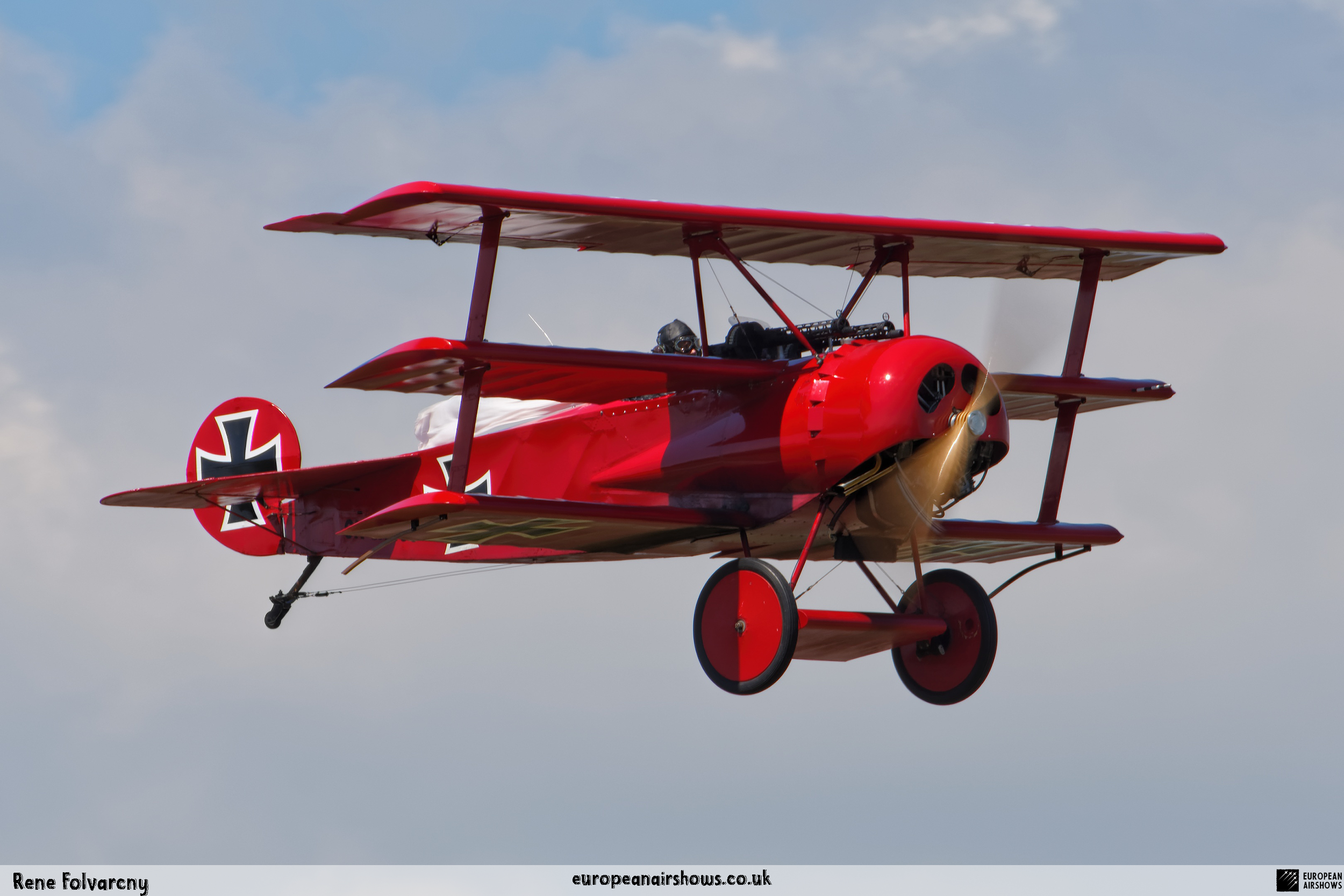
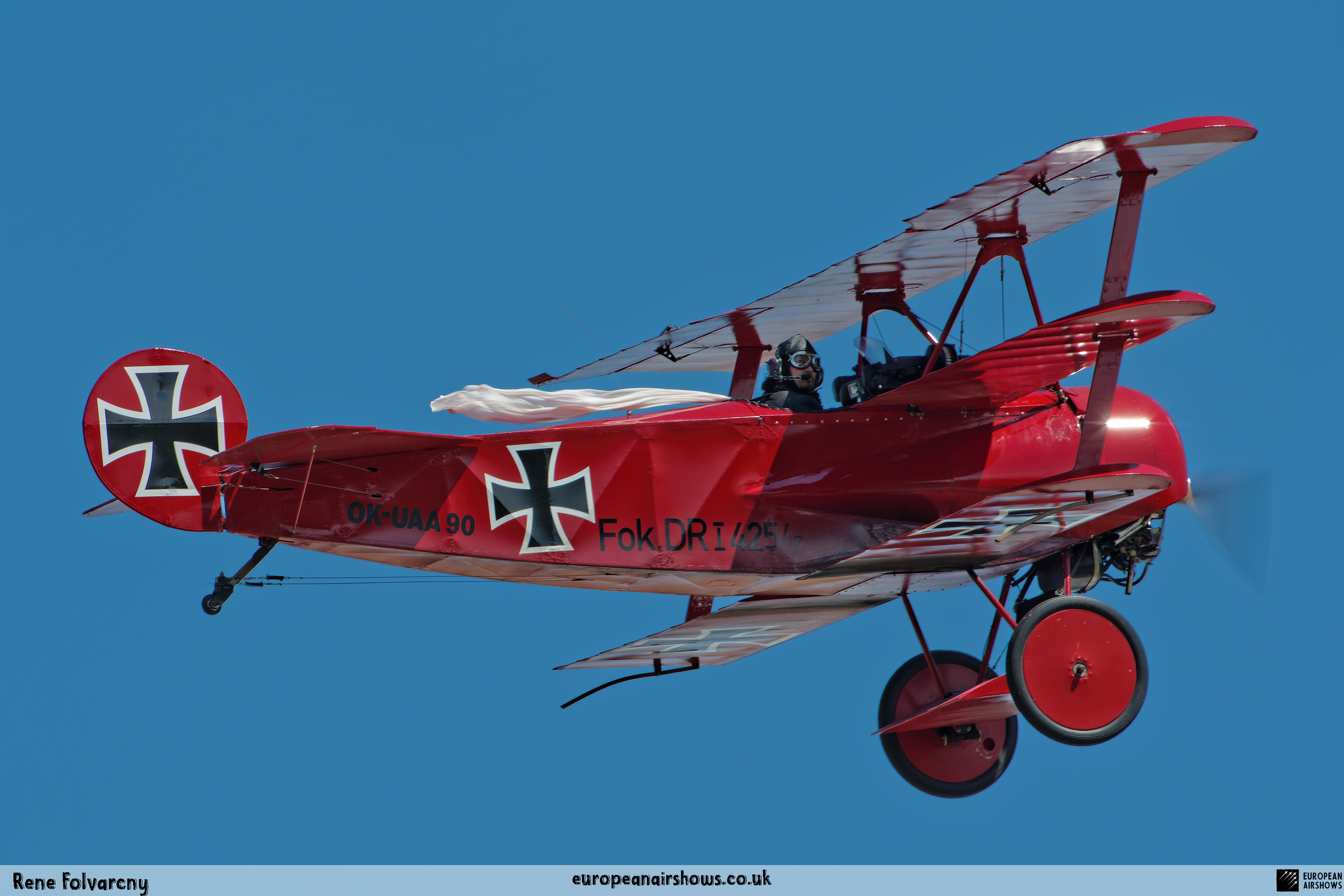

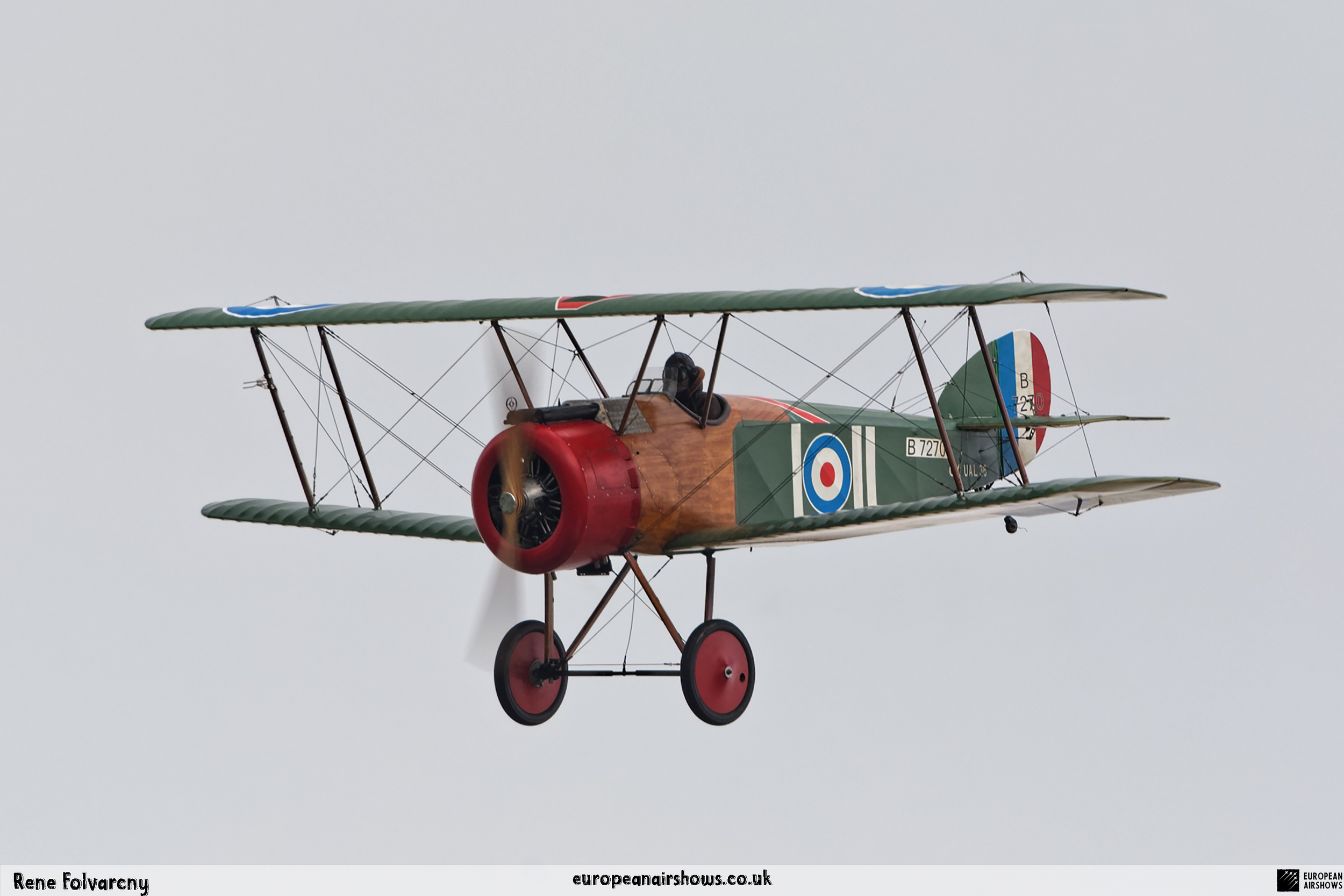
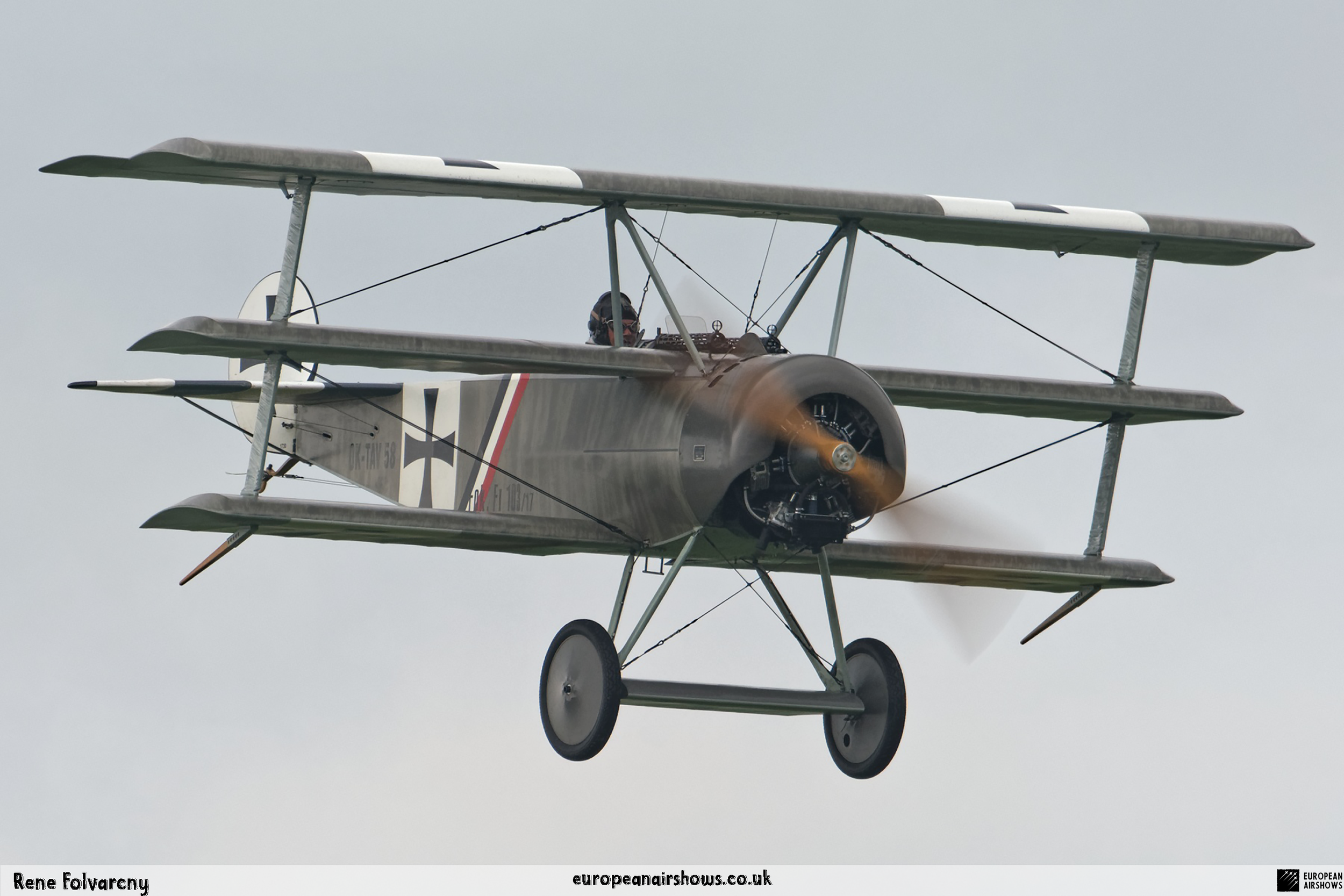
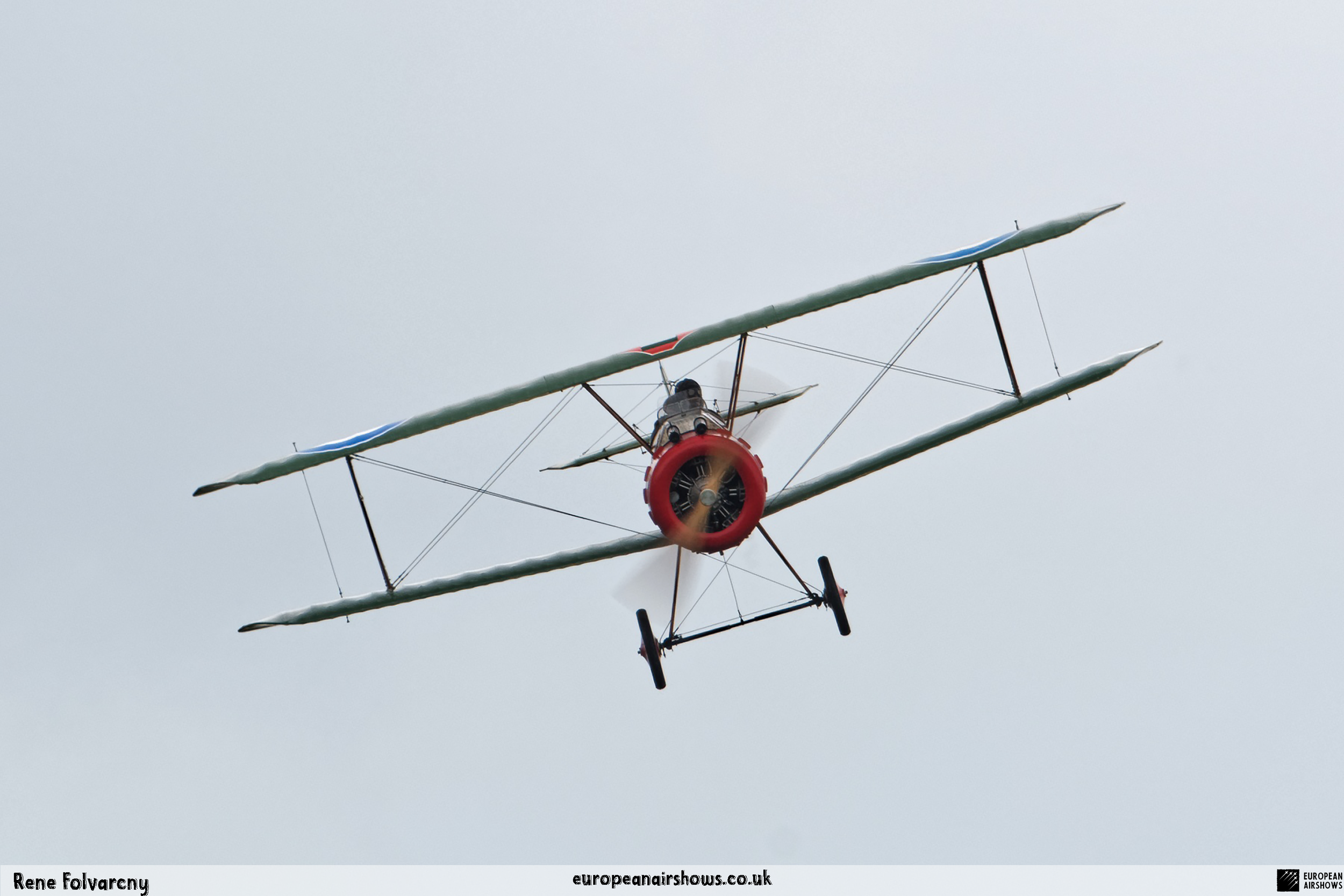

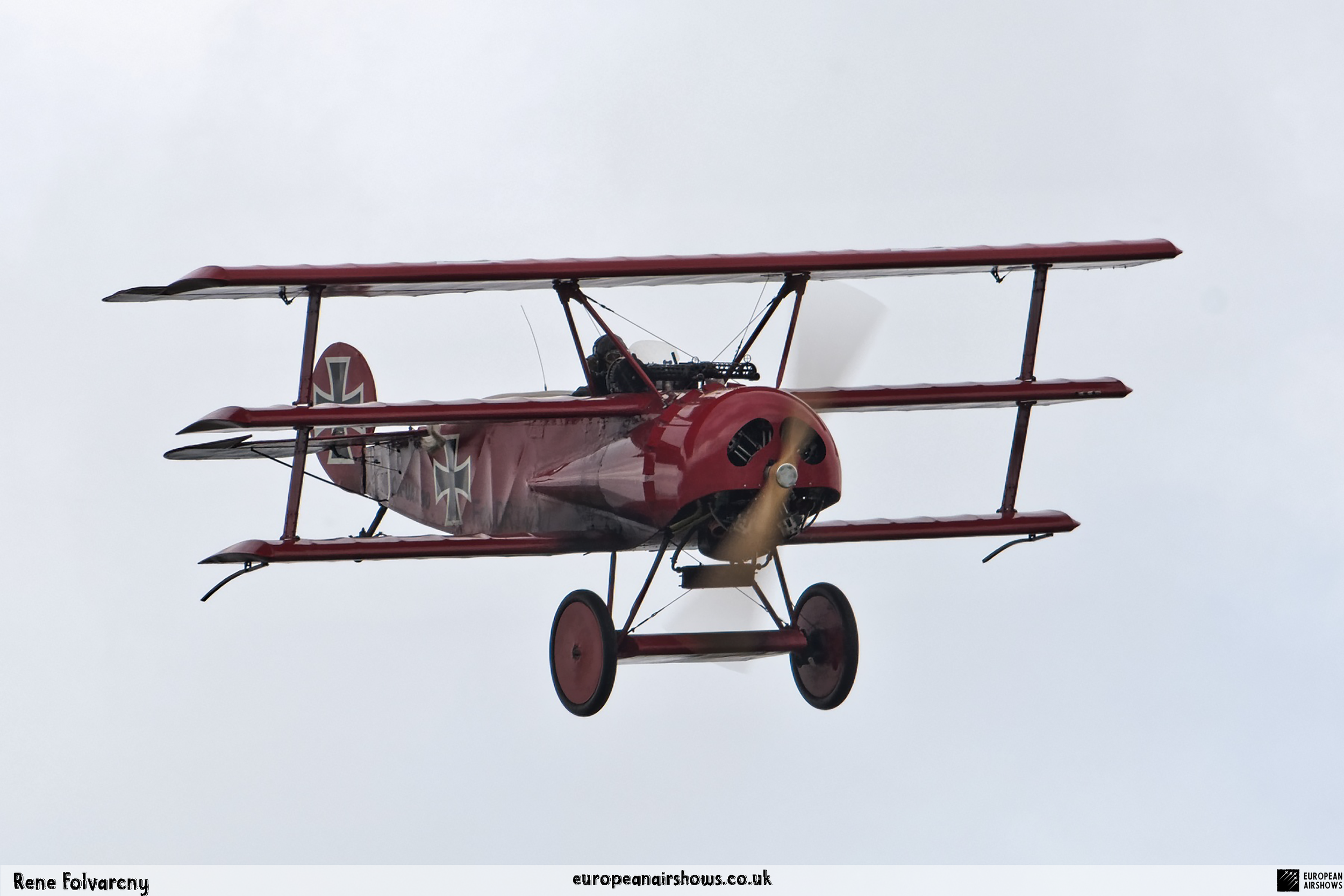
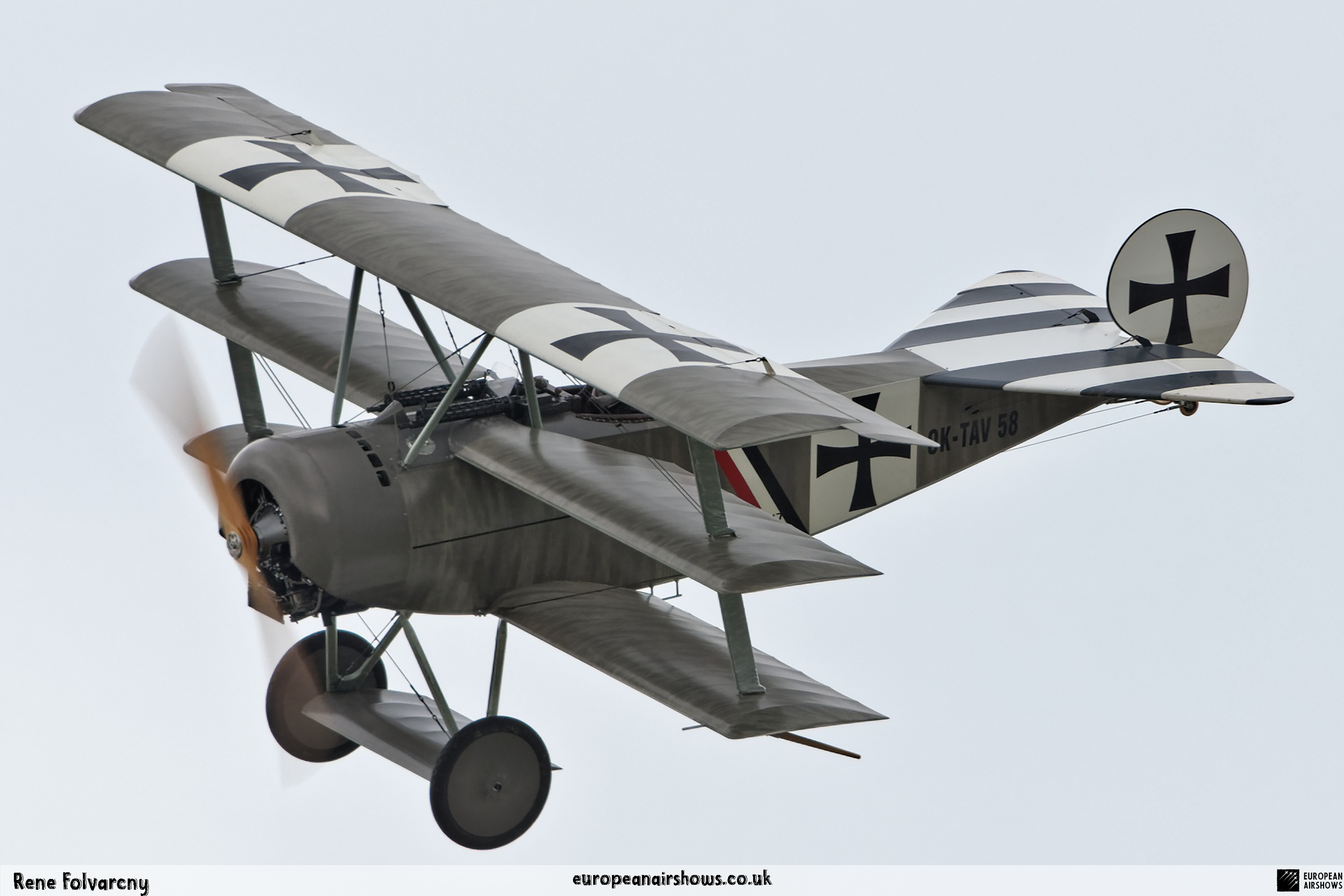
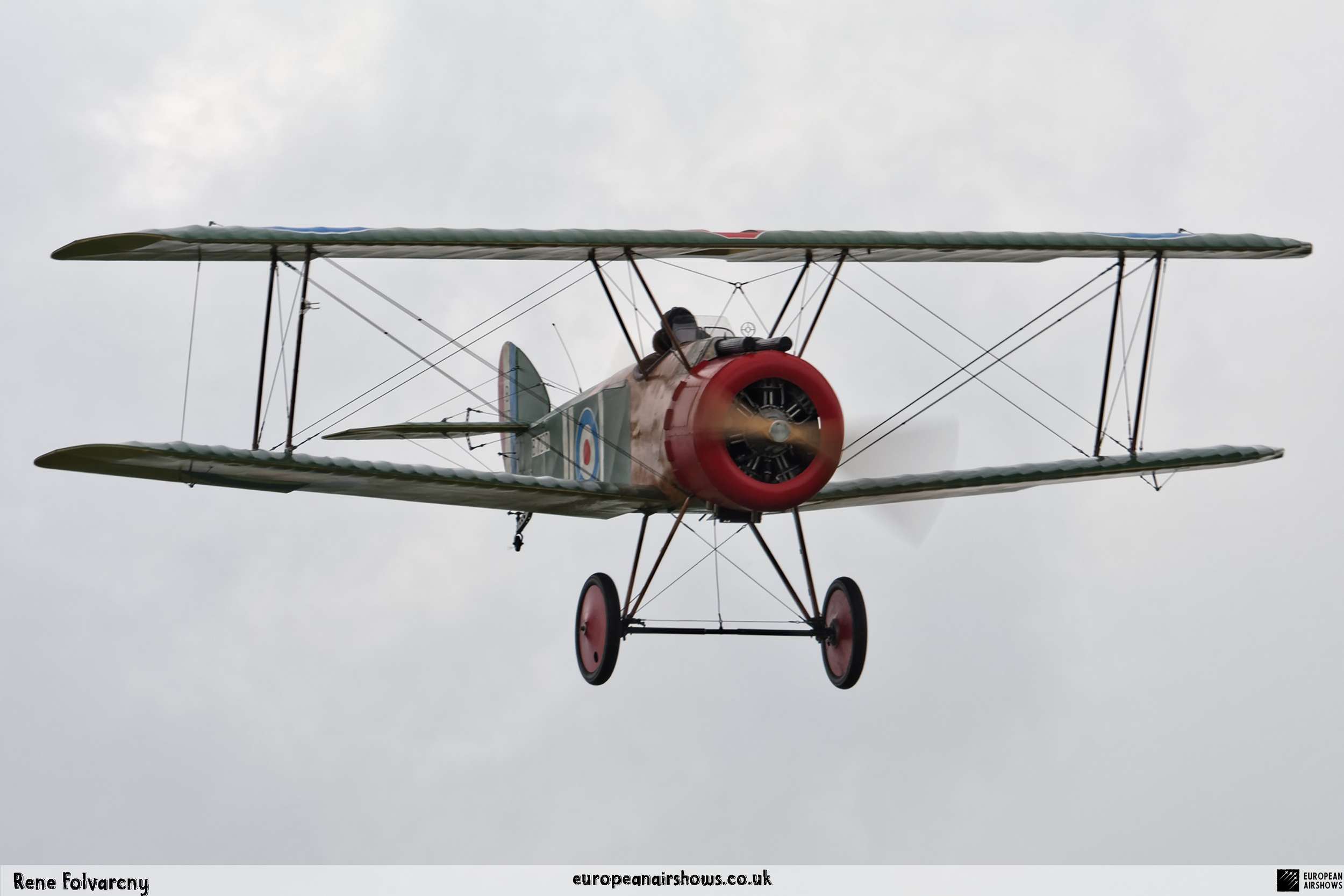
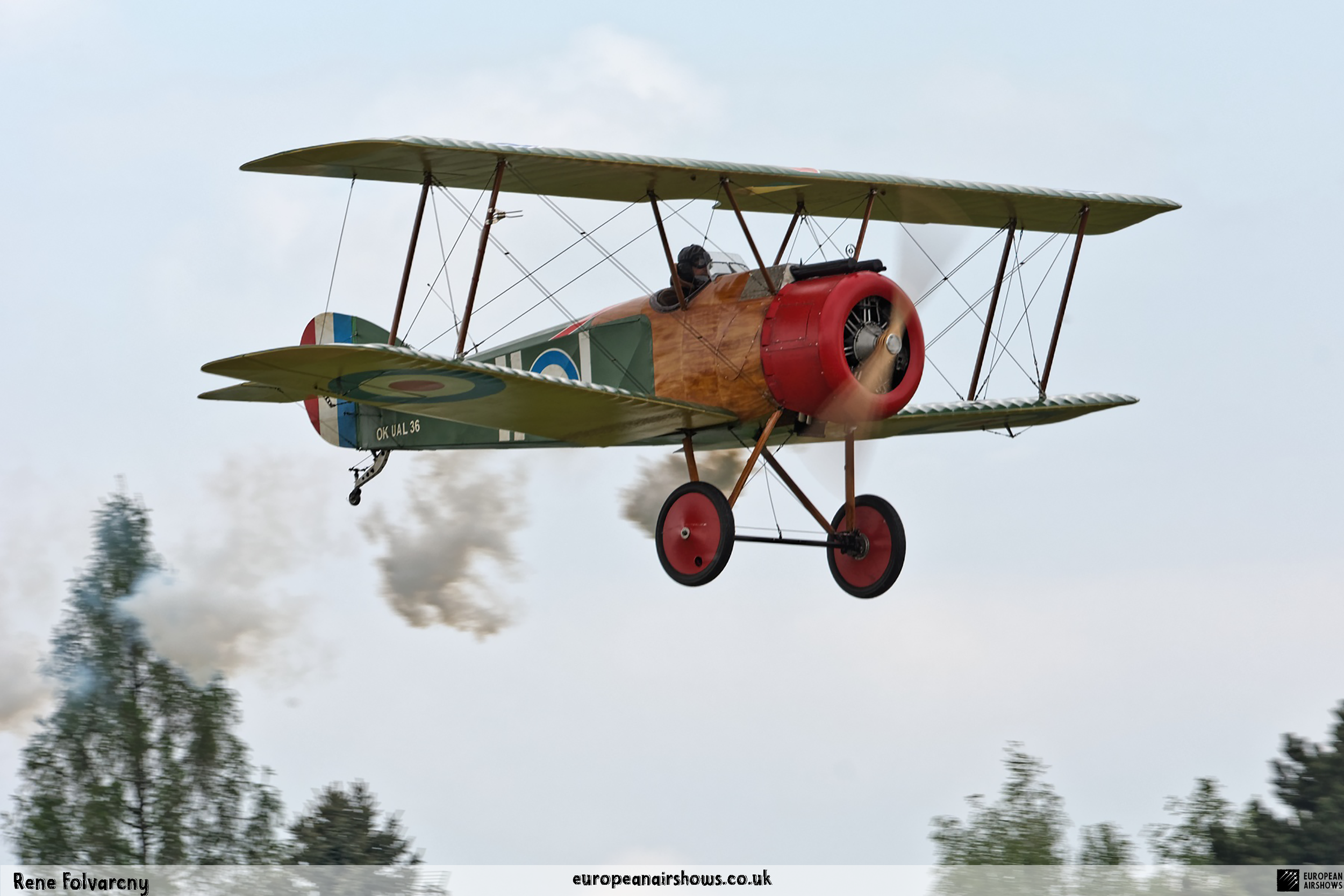
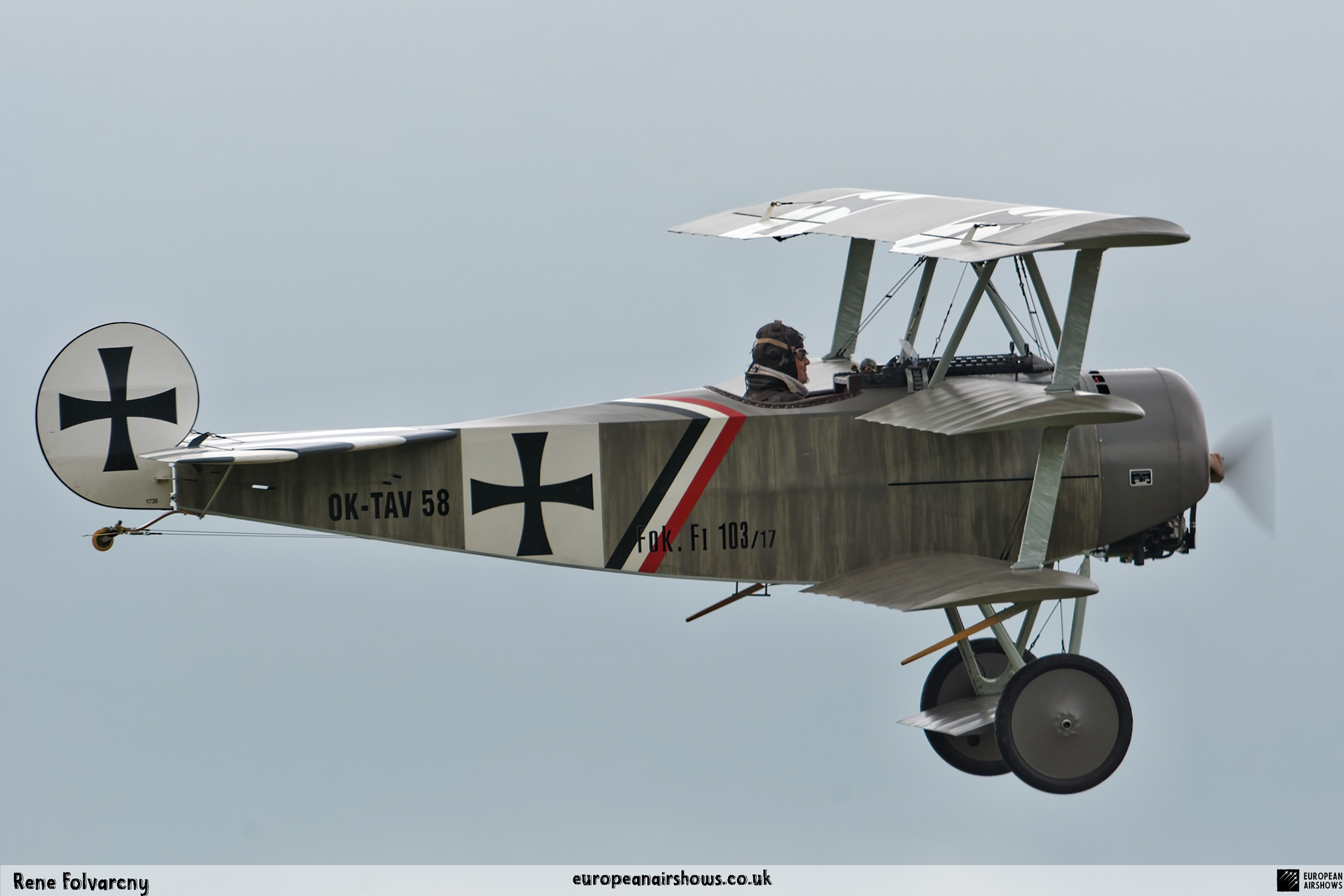

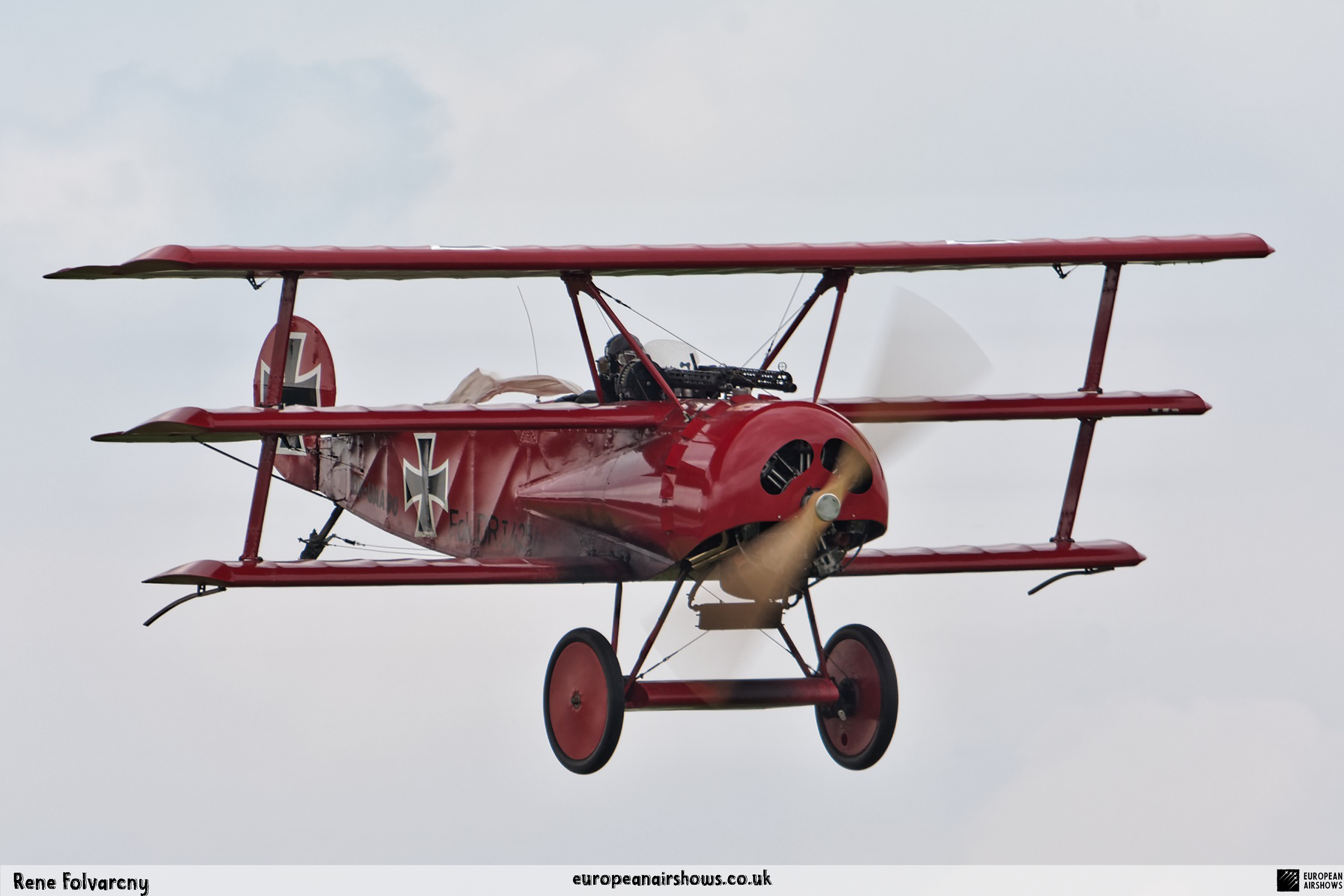


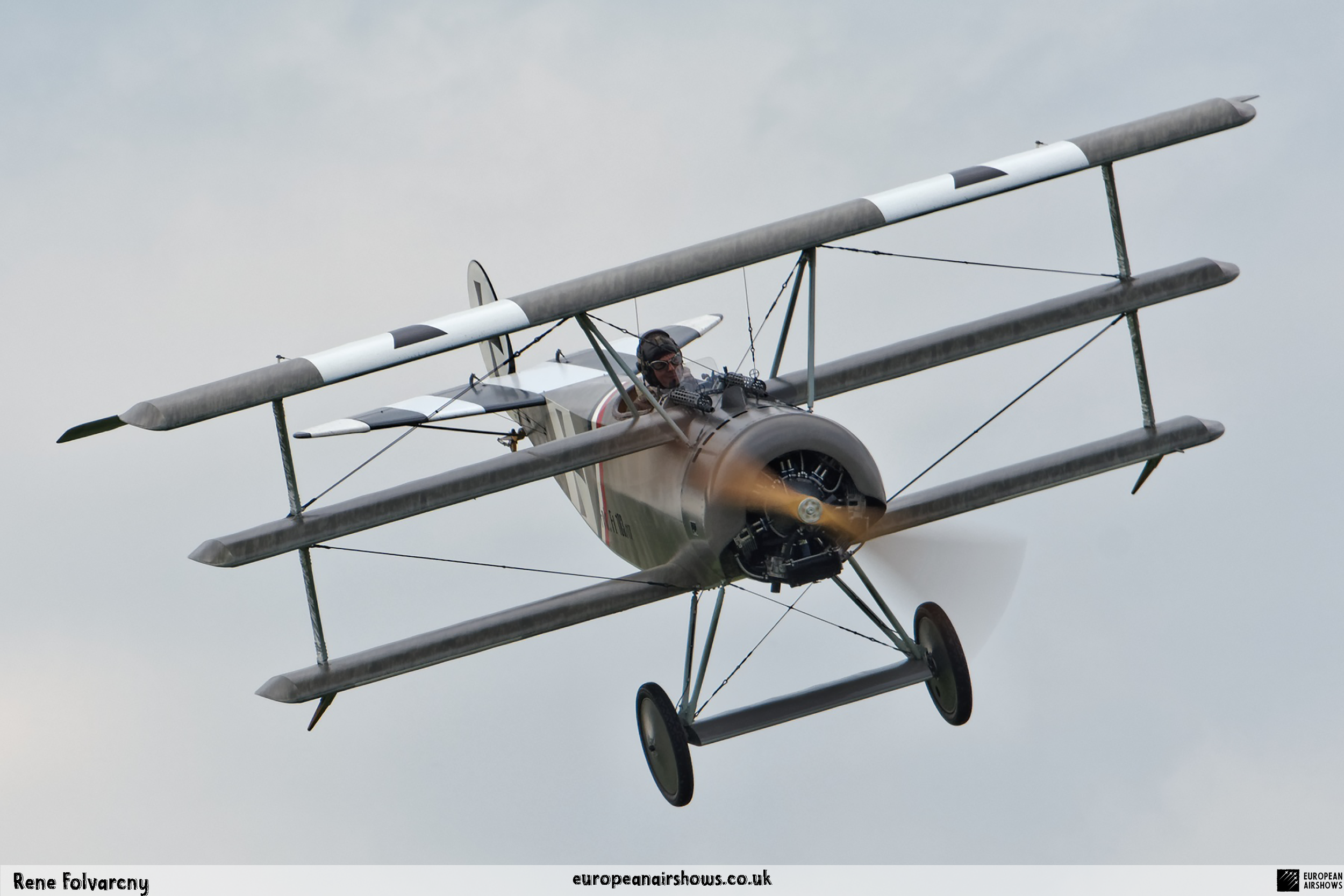
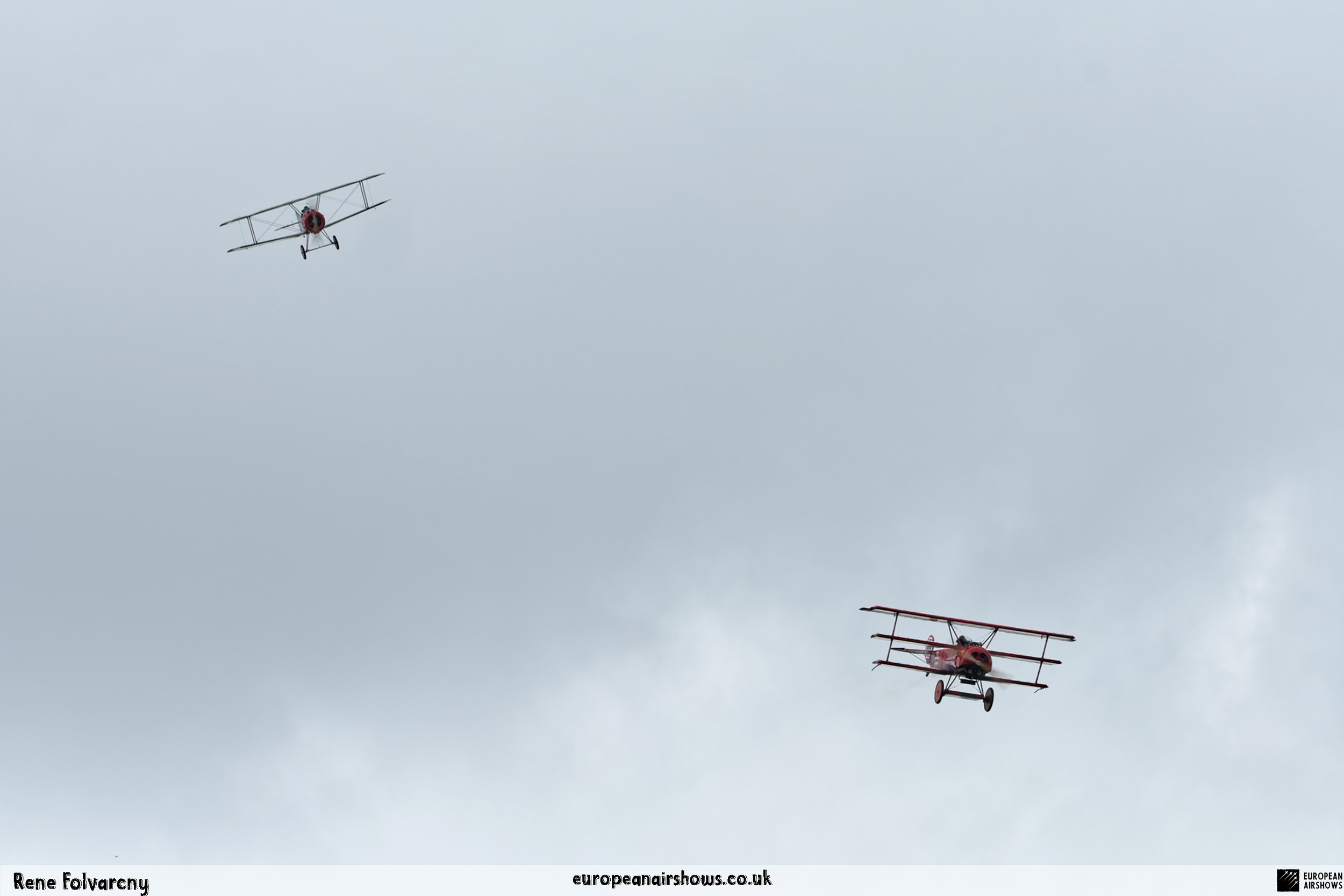

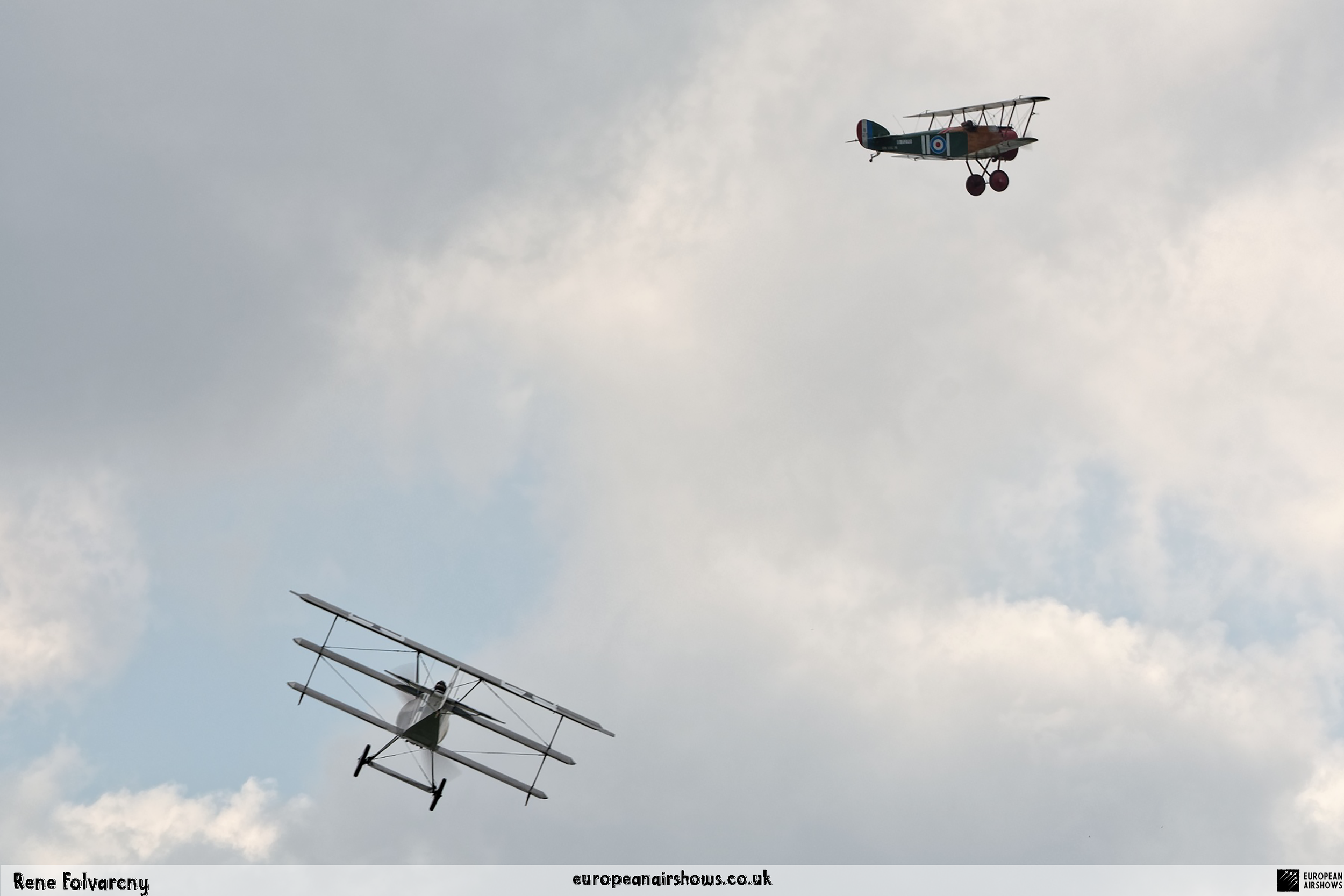
| Back to Top |































